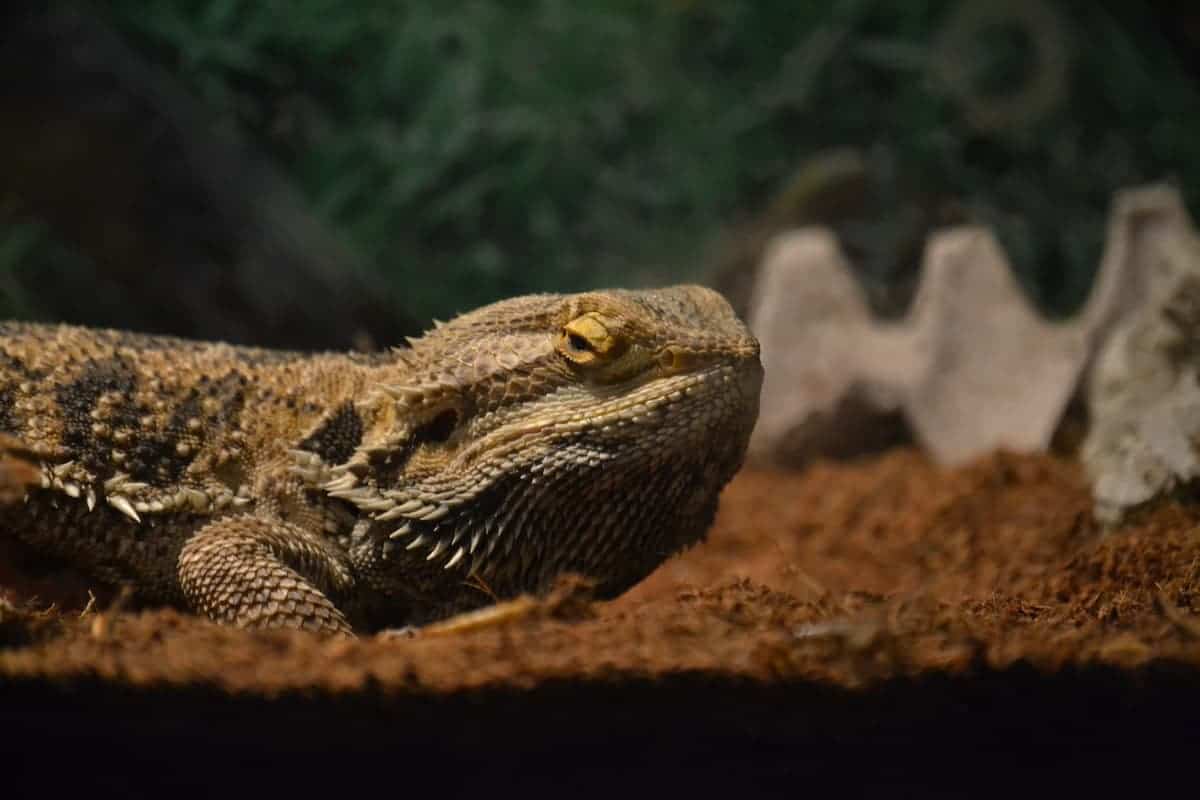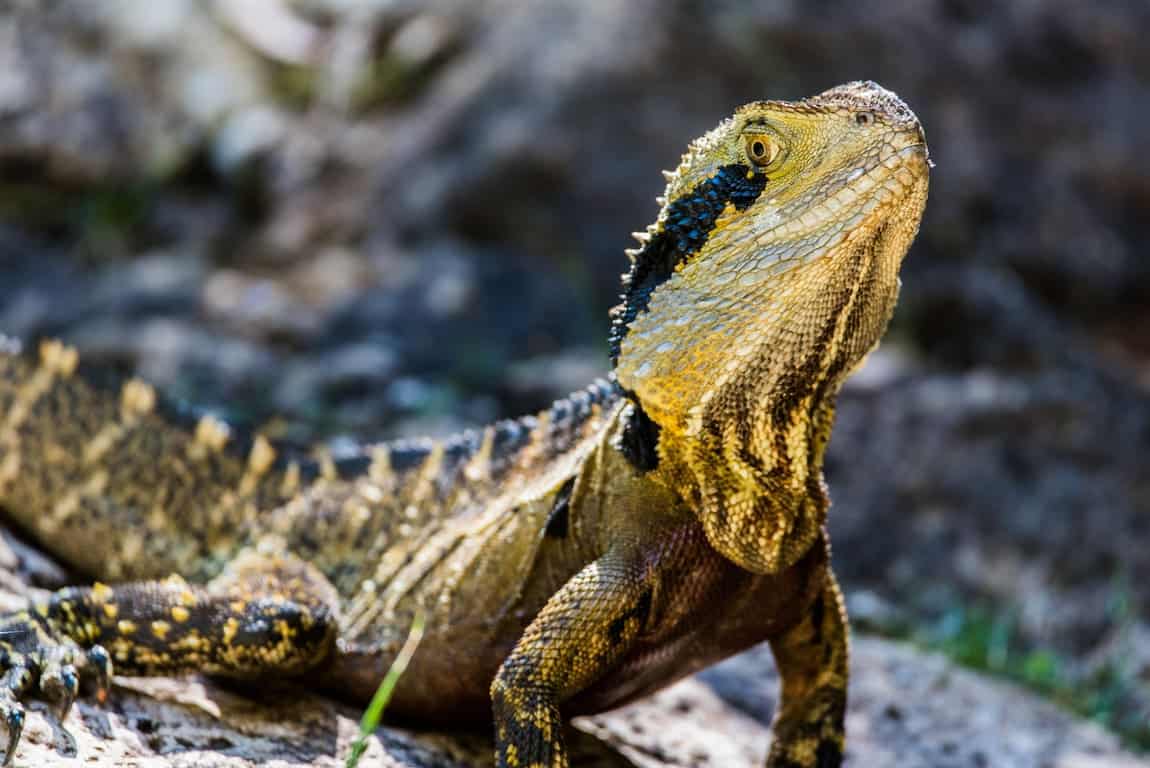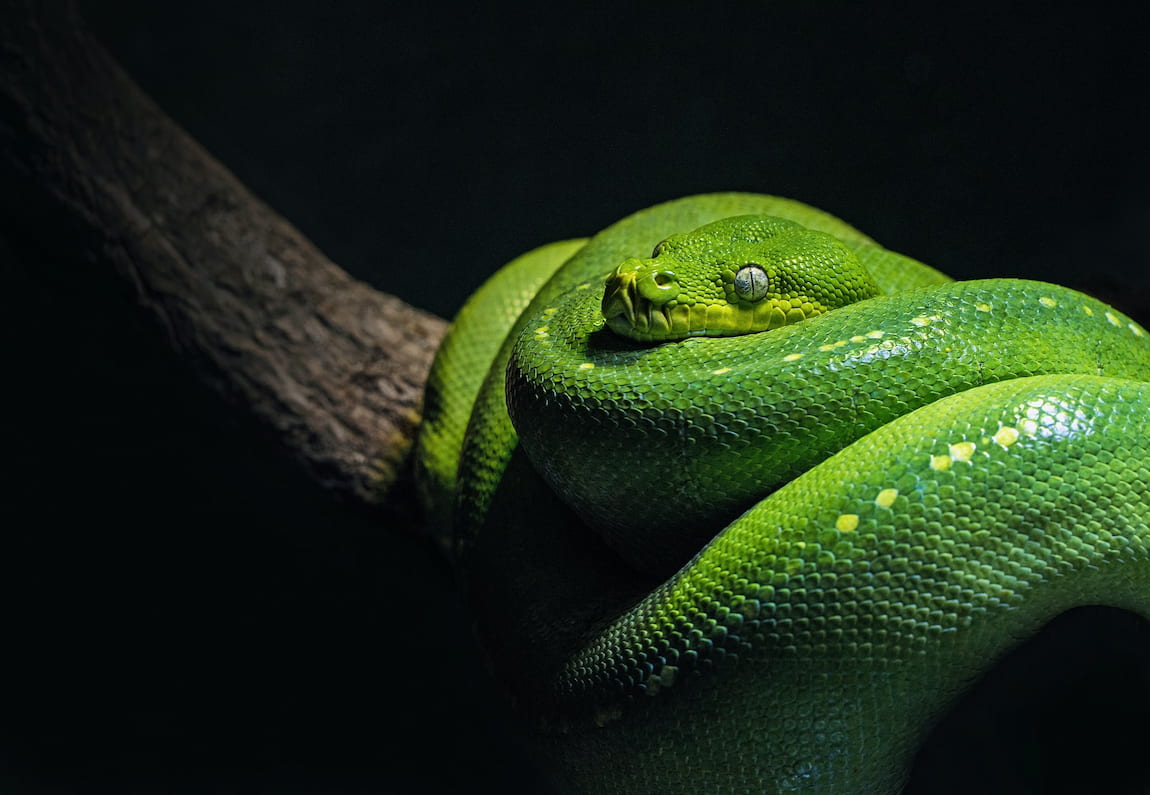Bearded dragons are some of the most popular reptiles to keep as pets. Many pet owners love them for their laid-back, relaxed personalities.
Something that isn’t surprising considering how relaxed these reptiles are is the fact that they sleep a lot. In some ways, a bearded dragon’s sleeping habits resemble that of a human in terms of duration and time. However, some things about the way a bearded dragon sleeps may seem strange to you, particularly if you just got your pet.
Here is everything that you need to know about how bearded dragons sleep so that you can best care for your pet.
A Bearded Dragon’s Circadian Rhythm
Just like us, bearded dragons are diurnal. That means that they are most active during the day (although these reptiles are usually not highly active no matter the time of day) and sleep at night. It’s important to note when they sleep because that impacts how they sleep.
Bearded dragons prefer sleeping in total darkness. They usually sleep for 8 to 12 hours a day, so slightly longer than humans.
Bearded Dragons and Light
A bearded dragon’s sleeping habits depend heavily on the light that it is exposed to. If a bearded dragon is exposed to too much artificial light, it will have difficulty falling asleep and may experience other health problems as a result of sleep loss.
Make sure that your bearded dragon’s cage is as dark as possible when it is time for it to go to sleep. You can even invest in a cage cover or create little hideaways that the dragon can go to when it wants to shut out the light. Avoid heating lamps that emit light in favor of heating mats or pads.
What Position Do Bearded Dragons Sleep in?
Bearded dragons sleep in similar ways to humans. They usually like to lie down on their bellies and take a snooze. They will also close their eyes when they sleep. Bearded dragons are very sensitive to light so they need to block it out to sleep.
Often, bearded dragons like to go into a burrow, hammock, or another hideaway to sleep. In the wild, these animals will only choose a sheltered place to fall asleep so that they can avoid predators. They follow these instincts even when they are a safe pet in someone’s house. Make sure that your dragon has enough hideaways to feel safe in its cage.
Sometimes, bearded dragons like to tunnel under sand and sleep buried in the sand. Usually, that’s just a harmless eccentricity, one of those little quirks that makes these pets so fun to own. However, if you notice your pet doing this often, it could be telling you that it needs a proper burrow or that its cage has too much light.
Unusual Sleeping Habits in Bearded Dragons
There are a few things that bearded dragons do when asleep that might make you raise your eyebrows—or run to call your vet in concern. If you notice that your dragon is breathing much more slowly than normal, don’t worry. Bearded dragons slow down their bodily functions while they sleep to conserve energy and body heat so it sometimes seems as if they are barely breathing.
Some bearded dragons actually change color while they are sleeping. You may notice that its skin is slightly lighter when it is sleeping. This is not a sign that your bearded dragon has a mysterious illness. A bearded dragon’s circadian rhythm not only governs its sleep, but it also affects its skin color.
Finally, some sleeping positions that bearded dragons favor seem uncomfortable to humans. You may notice your bearded dragon leaning upright against the side of its cage with its legs splayed out to the side—fast asleep. In the wild, bearded dragons will sometimes sleep leaning against a tree branch so they are capable of gravity-defying feats even when they’re not awake!
Do Bearded Dragons Hibernate?
Bearded dragons are cold-blooded animals, which means that they are not suited for cold weather as they cannot regulate their own body temperature. During cold weather, they brumate, which is a form of hibernation that many reptiles experience. Brumation helps cold-blooded animals stay alive when the weather outside is cold.
Brumation is similar to hibernation because both are periods of extended rest during cold weather. However, animals that brumate wake up every so often to drink water. On warmer days, they may even move around a little before hunkering down again when the weather gets cold.
Bearded dragons go into brumation for weeks or even months at a time, even in captivity. Signs that your bearded dragon is about to go into brumation include reduced energy levels, sleeping more, and eating less. You can help your dragon by gradually lowering the light and heat in its cage, turning it off completely once you’re sure that it hasn’t eaten in at least a week.
Can Bearded Dragons Dream?
Unlike most reptiles, bearded dragons experience REM, or rapid-eye-movement, sleep, alternating with periods of slow wave sleep. Humans and other mammals experience these types of sleep cycles, which scientists have tied to dreaming.
Thus, it’s a distinct possibility that while your bearded dragon is sleeping, it is having wonderful dreams. You may even notice it twitching during a particularly exciting dream, especially if you have a younger bearded dragon.
Conclusion
Bearded dragons have some of the most unique sleeping patterns of common reptile pets. Like humans, they sleep in the dark, lying down in their favorite cozy spot, and even experience brain activity that suggests they can dream. However, some sleeping habits of bearded dragons are baffling to humans, such as their penchant for sleeping upright.
Besides regular sleep, bearded dragons experience periods of deep sleep called brumation, which is hibernation but for cold-blooded animals. It is normal for your bearded dragon to sleep for weeks at a time and for its body to slow down so much it may be hard to tell if it is breathing.





